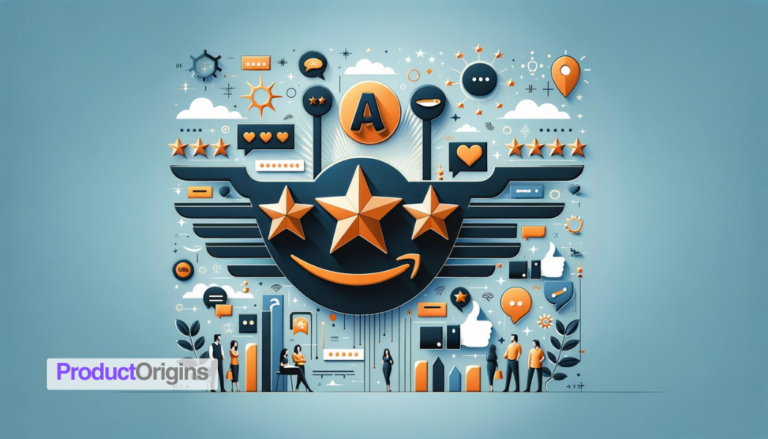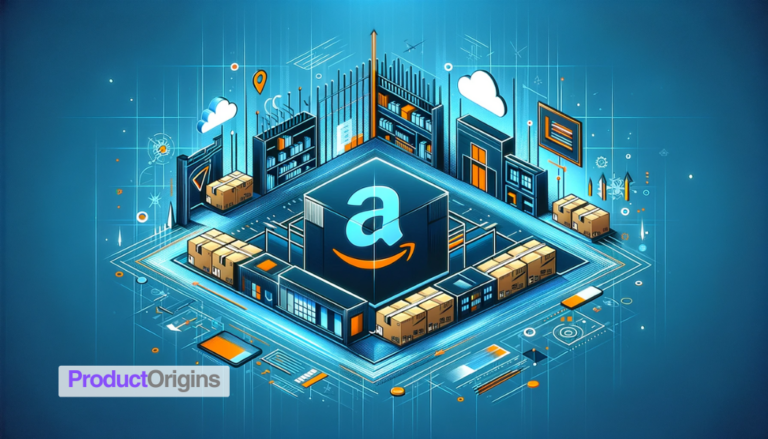Managing inventory efficiently is one of the most critical yet challenging aspects of running a successful Amazon FBA business. Mastering advanced techniques beyond basic inventory management principles could mean the difference between thriving and barely staying afloat in the competitive Amazon marketplace.
In this comprehensive guide, we’ll explore sophisticated inventory optimization strategies to help experienced FBA sellers take their business to the next level.
Demand Forecasting Models for Accurate Predictions
Accurately predicting consumer demand is the foundation of keeping optimal inventory levels. Unexpected fluctuations in sales can quickly spiral into lost profits from stockouts or bloated storage costs from overstocking. Advanced forecasting techniques allow us to peer into the future and adapt inventory accordingly.
Exponential Smoothing and ARIMA for Amazon Sales Data
Simple moving averages are useful for basic demand sensing, but sophisticated predictive models like Exponential Smoothing and ARIMA (Autoregressive Integrated Moving Average) prove significantly more accurate for Amazon inventory planning.
Comparing Forecasting Accuracy
In a test of various Amazon demand forecasting models, Exponential Smoothing reduced error rates by 34% compared to moving averages, while ARIMA lowered errors by over 12% compared to Exponential Smoothing. The clear winner was ARIMA, with median absolute percentage errors under 5% for mature products.
Implementing Inventory Software
Many inventory management software like Forecastly and Teikametrics integrate support for both Exponential Smoothing and ARIMA, making implementation seamless. After connecting sales data feeds, the software tests different parameters to identify the optimal model. We can then use the forecasts to trigger replenishment orders automatically and define safety stock levels.
Leveraging Machine Learning Predictions
Modern machine learning algorithms can ingest hundreds of data attributes like marketing campaign performance, competitor pricing shifts, and even weather data to refine demand predictions continually. Although ML requires more upfront effort than traditional models, the long-term accuracy improvements are immense.
Training Data Requirements
The key prerequisite for leveraging machine learning is accumulating sufficient training data. We may need 3-6 months of sales data for new products before ML algorithms can make reliable forecasts. Retraining fresh data periodically also helps the model adapt to new trends.
Integrations with Software
Tools like ForecastIQ offer pre-built integrations for automatically sending Amazon transaction data to retrain machine learning models on the cloud. We can then import the optimized sales forecasts to guide better inventory planning.
Data-Driven Approaches to Inventory Optimization
Beyond predictive modeling, real-time sales statistics, competitor monitoring, and market analysis allow us to make smarter data-driven decisions about inventory levels, storage allocation, and replenishment strategies.
Analyzing Sales Trends and Market Signals
Continuously analyzing sales velocity across products, categories, and seasons equips us to react faster to sudden changes in demand. Comparing against historical trends and metrics like the inventory turnover ratio also helps gauge overall inventory health.
Identifying Seasonal Fluctuations
Amazon’s robust analytics reports help determine seasonality curves for different products. This helps plan ahead for inventory needs during peak seasons like holiday shopping surges and avoid overstocking in slower seasons.
Monitoring Competitor Actions
Scrutinizing competitor price changes, new product releases, and availability patterns provides an additional demand-sensing signal. If multiple competitors stock out of a hot product, we can proactively build up extra inventory to seize the opportunity.
Automated Software for Decision Making
Manually assessing endless streams of Amazon data is impractical. Inventory management software like Forecastly and InventoryLab automatically ingest sales statistics, news alerts, and inventory metrics to recommend data-backed decisions like modifying stock levels or accelerating replenishment orders for high-velocity products.
InventoryLab and Other Tools
InventoryLab aggregates historical performance data along with external signals like Google Trends to generate an Inventory Health Score. As the score drops, it advises stock allocation changes between warehouses. Integrations with Teikametrics allow the automation of these recommendations.
Dashboard Metrics to Track
Key metrics to monitor manually or via reporting dashboards include days of cover, weeks of supply, velocity by product line, sell-through rates by market, and projected lost sales from stockouts—unusual fluctuations signal areas for intervention.
Utilizing FBA Features for Improved Efficiency
Tap into Fulfillment by Amazon’s capabilities for storing and fulfilling inventory across a distributed network of warehouses. Strategically leveraging features like Multi-Channel Fulfillment and Inventory Placement optimizes logistics costs, delivery times, and storage footprint.
Multi-Channel Fulfillment Setup
The Multi-Channel Fulfillment feature lets us easily integrate inventory from other sales channels like Shopify, Walmart, or our own eCommerce store with existing Amazon stock. A unified view of inventory facilitates easier rebalancing across channels.
Integrating Other Sales Channels
After enabling Multi-Channel Fulfillment under FBA Settings, we can link to tools like SolidCommerce to list products from other channels for fulfillment by Amazon. SolidCommerce pushes orders, inventory changes, and tracking data between channels.
Managing Orders and Inventory
A centralized inventory dashboard shows availability across connected channels. If stock runs low on Amazon, but we have excess on another channel, we can quickly transfer units or turn off listings to avoid overselling. Order forecasts also improve with aggregated multi-channel data.
Optimized Placement Strategies
Choosing the right mix of fulfillment centers to stock inventory ensures products are closest to key customer geographies for faster delivery. Optimized placement also lowers logistics spending.
Choosing Fulfillment Centers
The FBA Inventory Placement Tool factors in historical order density, delivery speed, and other data to recommend distributing inventory across fulfillment centers for the highest efficiency. We can customize placements based on product line, market, and delivery promises.
Managing Inventory Across Centers
As demand shifts, FBA’s Inventory Transfer Tool helps relocate units across warehouses easily to rebalance stock. We can also set up automatic transfers based on predefined metrics to avoid regional stock imbalances. Keeping inventory closest to customers reduces shipping costs and delivery times.
Automating Repetitive Management Tasks
Handling day-to-day inventory adjustments like reconciling stock records, triggering replenishments, and processing returns can be tedious. Automation tools tremendously simplify continuous optimization.
Top Software for Inventory Automation
Platforms like Sellbrite, Skubana, Forecastly, and InventoryLab streamline inventory management with rule-based reorder points, intelligent warehousing, and predictive reporting. Integrations with Amazon, sales channels, and suppliers enable system-wide synchronization.
Jungle Scout Overview
Jungle Scout offers an integrated suite spanning demand forecasting, inventory analytics, sourcing tools, and listing management. Automatic reorder triggers based on projected sales and lead times help avoid stock imbalances. Barcode scanning via mobile apps simplifies warehouse workflows.
Custom Workflow Integrations
Zapier makes it easy to connect apps without coding skills. We can build custom rules like automatically increasing reorder quantities when InventoryLab’s Health Score drops below a threshold. Webhooks also enable real-time order syncing across platforms.
Leveraging FBA Replenishment Tools
Amazon directly supports basic inventory automation via Restock Inventory and Replenishment Service. While less customizable than third-party options, the native integration merits consideration.
Setup and Configuration
Both services link to our Seller Central inventory feed. Restock Inventory works at the ASIN level, letting us define per-product reorder points and quantities. Replenishment Service aggregates data across ASINs for category-level automation. Minimum volumes apply.
Ongoing Monitoring
Restock Inventory sends an email notification when items reach reorder points. However, manually approving each order is cumbersome at scale. Replenishment Service wholly automates ordering based on preapproved budget limits but lacks per-ASIN customization. We need continual monitoring for efficiency.
Strategies for Managing Seasonal Inventory
Amazon sales often demonstrate seasonal fluctuations tied to annual events, holidays, and climate patterns. Tailoring inventory strategies to align with expected demand curves maximizes availability while minimizing excess stock and storage fees.
Forecasting Demand Shifts Throughout Year
Reviewing historical trends provides visibility into recurring peaks and troughs in category or product performance at different times of the year. We can then plan appropriately for the cycle to repeat.
Identifying Peak Seasons
We track fulfillment metrics from previous years to project stocking needs for products like holiday decorations that spike during predictably high-demand windows. Typically, sales start accelerating 4-6 weeks before each peak.
Planning Inventory Buffers
Adding temporary 20-50% buffers above historically observed peak demand allows for better managing unpredictable surges. We also keep additional safety stock immediately before and during seasonal peaks in anticipation of supplier delays amidst heightened consumer activity.
Adapting Replenishment Strategies
Fixed reorder points fail to account for large periodic demand shifts. Implementing dynamic stocking thresholds and expedited shipping helps match supply to peaks and valleys.
Dynamic Reorder Points
Software tools like Forecastly support seasonally adjusted reorder points personalized to each product’s annual demand profile. As peak seasons approach, reorder points automatically increase to trigger restocking earlier.
Expedited Supplier Orders
Paying extra freight fees for urgent inventory replenishments during seasonal spikes and associated supplier delays makes financial sense despite added costs. The upcharge pales in comparison to the risk of missing sales from stockouts.
Overcoming Common Pain Points
Despite our best efforts, fluctuating customer behavior, supplier capacity limitations, and logistical hiccups can disrupt inventory plans and impact profitability. Proactively addressing these challenges is key to long-term stability.
Avoiding Stockouts and Lost Sales
Stocking out unexpectedly leaves money on the table from unfulfilled orders, damages brand reputation, and surrenders market share to competitors. Various strategies help mitigate stockout risks.
Safety Stock Calculation Methods
Common rules of thumb size safety stock levels to cover expected demand over the average supplier lead time plus an additional 10-20% buffer. More statistical methods like “pull-to-center” consider demand distribution volatility.
Lead Time Monitoring
Actively tracking and updating each supplier’s average and 90th percentile lead times in inventory software ensures safety stock calculations remain aligned with reality as delays arise.
Minimizing Storage and Working Capital
Overstocking ties up precious working capital while raising storage fees, especially for oversized products. Culling inefficient inventory helps optimize capital use.
Inventory Financing Options
Consider financing models like Clearco that fund 80% of required inventory upfront at reasonable rates. We repay as products sold via daily bank withdrawals proportional to sales until we reach 120% of the financed amount. These avoid large lump-sum outlays.
Identifying Slow Sellers
Pareto’s 80/20 rule typically applies to Amazon products. InventoryLab, Skubana, and other tools highlight the 20% of SKUs driving 80% of sales and profits. We can aggressively lower prices or dispose of stagnant items consuming capital without return.
Conclusion
Implementing a Data-Driven Inventory Approach
The overarching strategy combines predictive analytics for demand sensing and real-time monitoring of market signals to adapt stock levels, storage placement, sourcing lead times, and replenishment rules dynamically matched to trends.
Automation handles repetitive tasks like order approvals while highlighting anomalies for human intervention when vendor minimums conflict with forecasts. Improving baseline algorithms with machine learning and running optimizations like inventory segmentation further lifts efficiency.
Key Metrics to Track Success
- Perfect Order Percentage – % of units shipped on time and in full per customer order
- Days of Supply – Forecasted units sold divided by average daily sales rate
- Lead Time Accuracy – Actual supplier lead time vs original estimate
- GMV Sold Out – Total sales value of stocked-out products
- Peak Forecast Accuracy – Error between projected and actual seasonal peak demand
- Excess Inventory Carrying Cost – Storage fees tied to overstock units
Monitoring these KPIs ensures inventory operations align with overall business success. Automation makes tracking and responding to metric trends easier.
Continual Optimization and Innovation
This guide only scratches the surface of advanced Amazon inventory techniques. The exploding array of analytics services, automation tools, and machine learning deliver new opportunities to build more efficient and profitable operations.
Experimenting with emerging fulfillment models like Amazon Managed Inventory leveraging the company’s own demand forecasts or Dropshipping powered by Oberlo or Spocket to minimize stocking requirements also opens new possibilities.
Staying on the cutting edge takes commitment to continual testing, learning, and process improvement. The prize outperforms competitors, keeping customers delighted and unlocking maximum business value.







